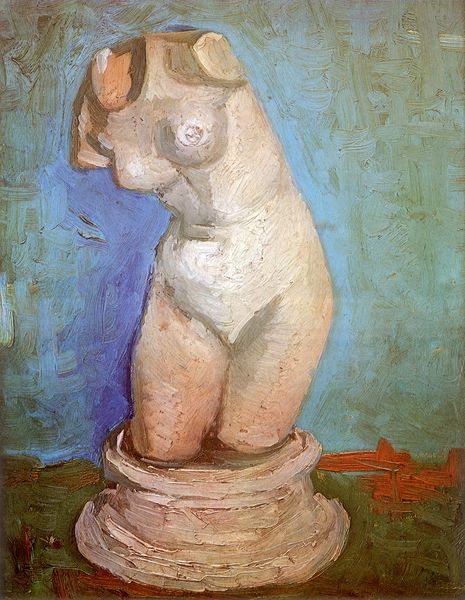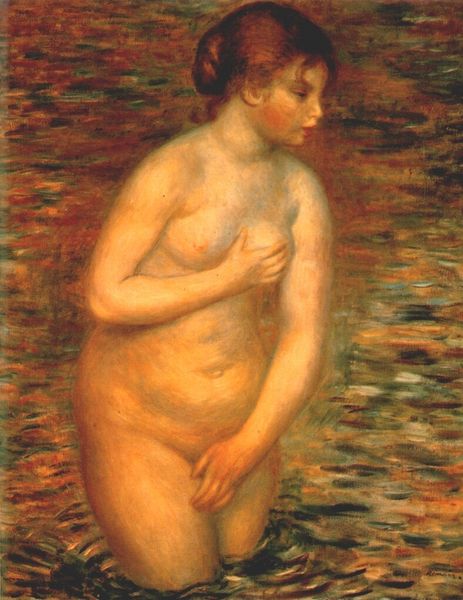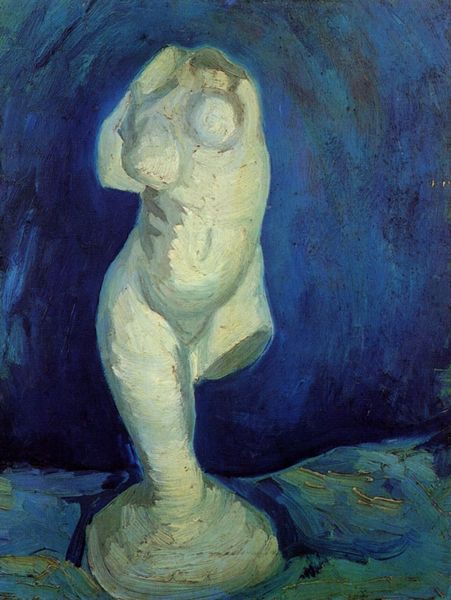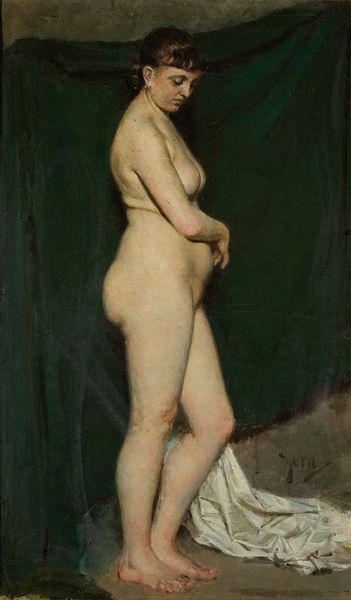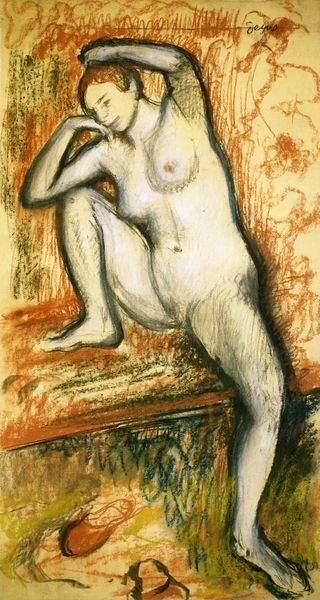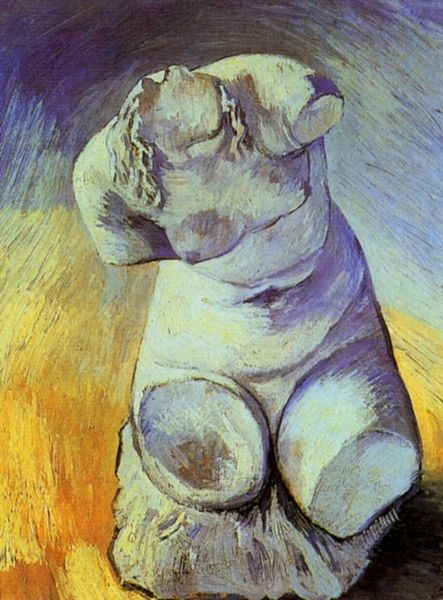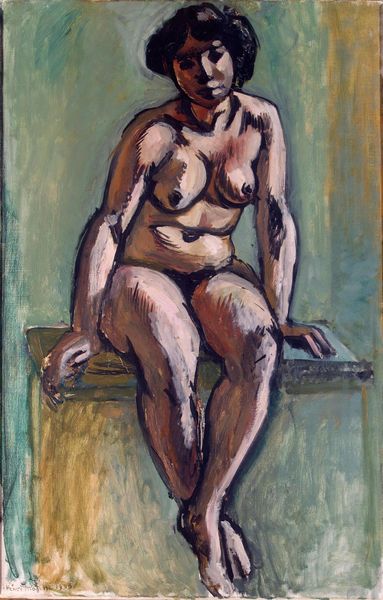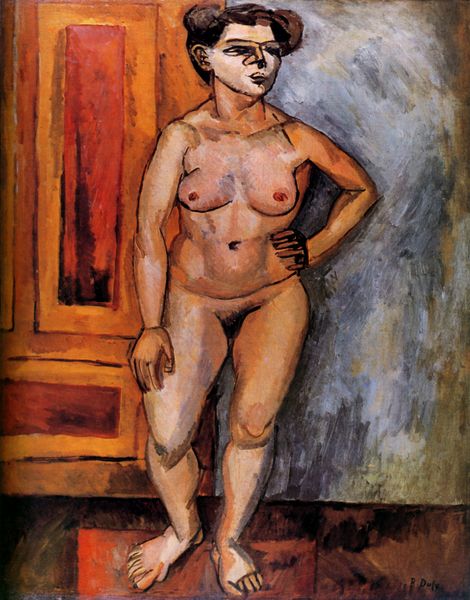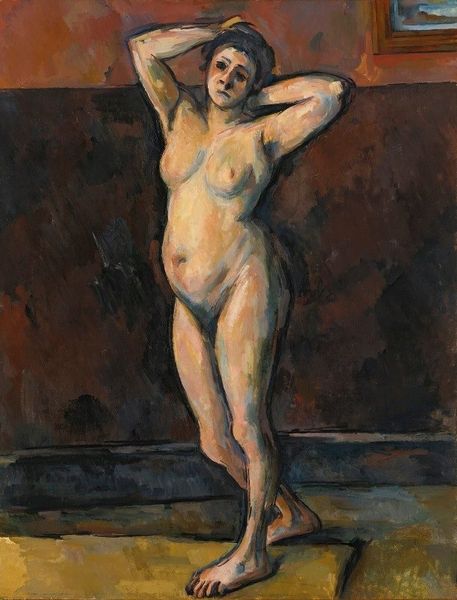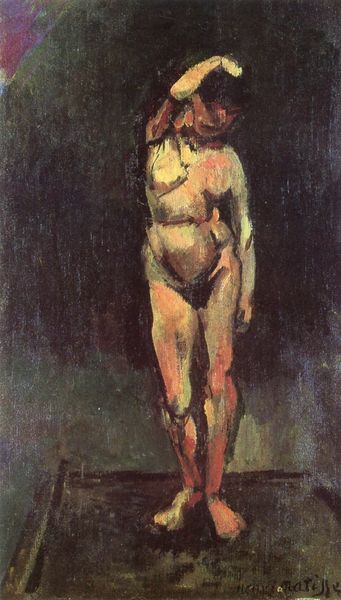
painting, oil-paint, impasto, sculpture
#
painting
#
oil-paint
#
landscape
#
figuration
#
oil painting
#
impasto
#
intimism
#
sculpture
#
post-impressionism
#
nude
#
realism
Copyright: Public domain
Curator: This is Vincent van Gogh’s “Plaster Statuette of a Female Torso” from 1886, currently housed at the Van Gogh Museum in Amsterdam. He rendered it in oil paint, adopting his signature impasto technique. Editor: Striking, isn't it? I'm immediately drawn to how solid and present she feels despite being just a fragment. There's an unapologetic physicality, a quiet declaration. Curator: It's compelling precisely because it is a fragment, no? The headless, limbless torso becomes a universal form, stripping away individual identity to reveal an idealized, classical shape. Editor: Absolutely, but let's not overlook how the "ideal" female form has historically been weaponized against real women. Even as a fragment of a copy of antiquity, it begs the question of who gets to define beauty, who is erased in that definition, and for what purpose. The cool tonality also somehow feels clinical, disconnected. Curator: Perhaps, but it's also tempting to consider it from Van Gogh’s perspective as a study of form and light, a means of exploring the human figure in a new, perhaps less reverential, way. He was still developing his style at the time, pushing against the established academic constraints he felt so limited by, seeking to see and paint with a renewed vision. The stark green in the background certainly aids that exploration. Editor: Fair point. Context always shifts perception. Looking at it now, I'm wondering what kind of social statement van Gogh was attempting to make by capturing a form with missing pieces, during this stage of exploring artistic freedom? Perhaps it symbolized the start of an unfinished project. Curator: The beauty of art, isn’t it, inviting new perspectives and opening doors? Each viewer inevitably carries their own lens and makes up the other half of the experience! Editor: Agreed. Ultimately, the painting makes us engage with our individual viewpoints. Hopefully a broader recognition, that art can belong to us all in some way.
Comments
No comments
Be the first to comment and join the conversation on the ultimate creative platform.
